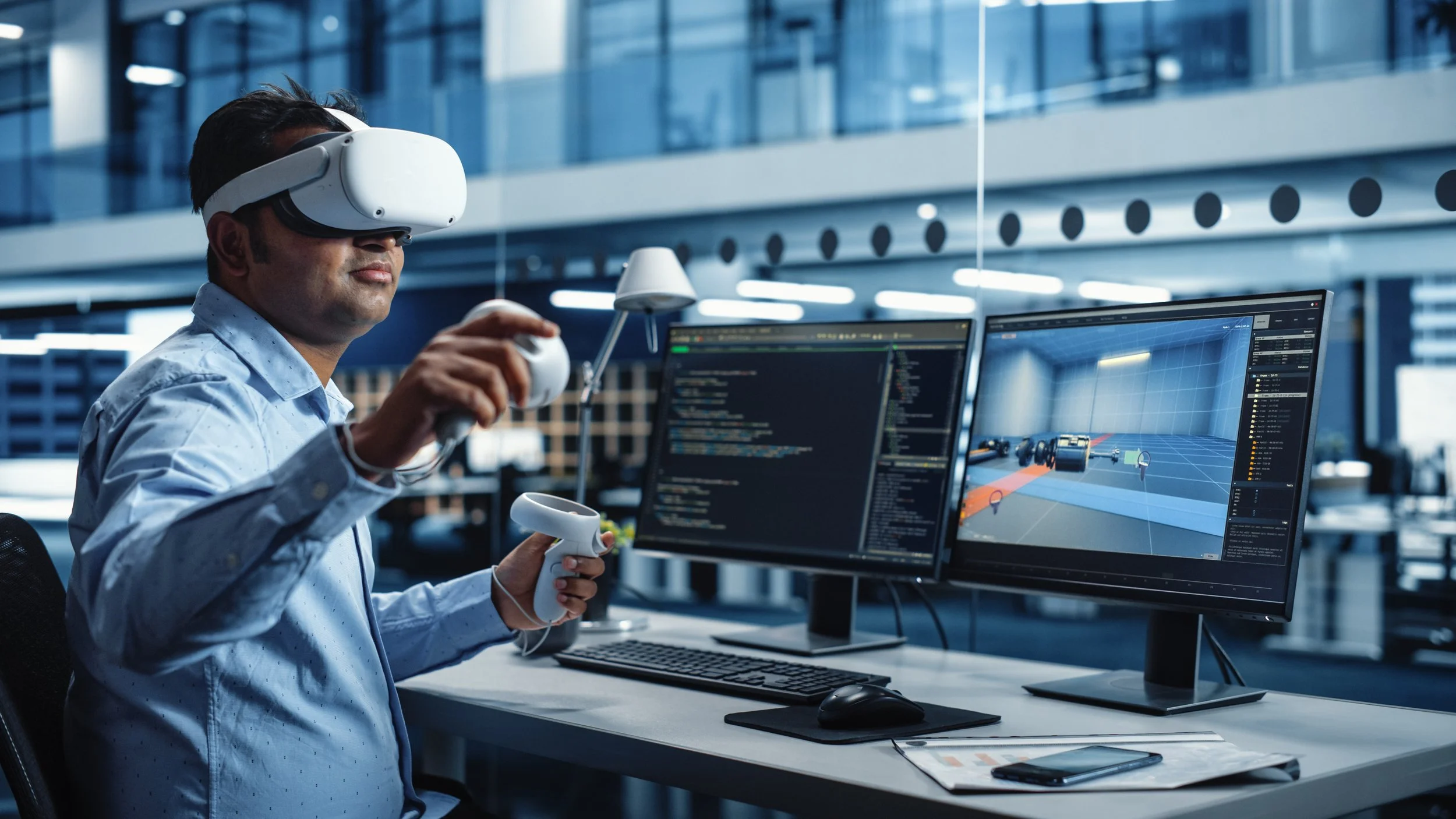Why VR?
Here’s a primer on the benefits of leveraging immersive tech to solve common workplace problems.
90%
The data:
85%
50%
Virtual reality (VR) is more than a futuristic idea — it’s a powerful tool transforming the way industries work, learn, and connect. By creating immersive digital environments, VR opens up new possibilities for engagement, education, and innovation. Here’s why it matters.
Train faster, safer, and smarter
In industries like manufacturing, healthcare, and logistics, training employees often means balancing hands-on learning with safety, time, and cost constraints. VR solves this by simulating real-world scenarios in risk-free, repeatable environments. Trainees can build muscle memory, make decisions under pressure, and experience high-risk situations without consequence — all from a VR headset.
Engage like never before
VR brings a new level of presence and emotional engagement to storytelling, marketing, and experiential design. Whether you're showcasing a new product, walking someone through a space, or building brand connection at an event, immersive experiences cut through noise and create lasting impressions.
A platform for innovation
Virtual reality doesn’t just replicate reality — it allows us to go beyond it. From testing ideas at scale to building tools that couldn’t exist in the physical world, VR enables creative problem-solving and innovation across sectors. When paired with AI, sensors, and real-time data, it becomes a powerful layer in any digital transformation strategy.
Industries already leading the way
Manufacturing: for safety training, virtual prototyping, and onboarding
Healthcare: for surgical rehearsal, patient education, and mental health therapy
Education: for immersive learning environments and virtual field trips
Retail and fashion: for virtual try-ons, spatial planning, and product previews
Events and marketing: for pop-up experiences, interactive product launches, and branded XR activations
Architecture and real estate: for walkthroughs, visualizations, and client approvals
Visualize the invisible
From architectural walkthroughs to medical visualization and product prototyping, VR allows people to step inside complex data, designs, or systems. This makes abstract concepts easier to understand, collaborate on, and improve — especially for remote teams or non-technical stakeholders.
Reduce cost, waste, and travel
Virtual simulations can dramatically reduce the need for physical mockups, travel, and printed materials. Whether it’s training a global workforce or previewing a retail fitout, VR helps businesses cut expenses and environmental impact while speeding up workflows.
Build skills for the real world
Unlike passive learning methods, VR taps into experiential learning — where people gain understanding through doing, not just observing. It improves knowledge retention, confidence, and real-world readiness, especially in high-skill or high-pressure roles like surgery, emergency response, or technical maintenance.
Ready to explore what VR can do for you?
Whether you're curious about using immersive tech for training, showcasing, or storytelling, the best way to understand VR’s potential is to experience it. Get in touch to explore what’s possible.
Get in touch.
Contact us directly or use the form to leave a message.
hello@composit.design
(+61) 0421 173 837
Composit is Australian-owned.



